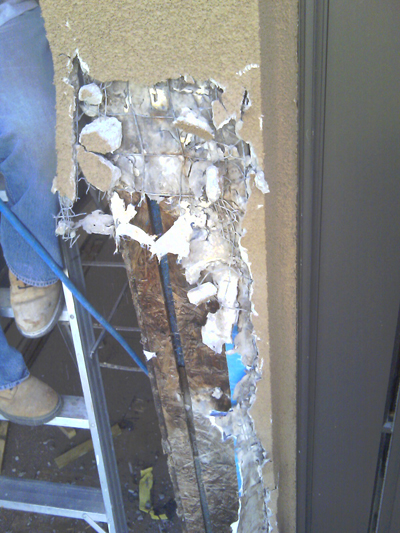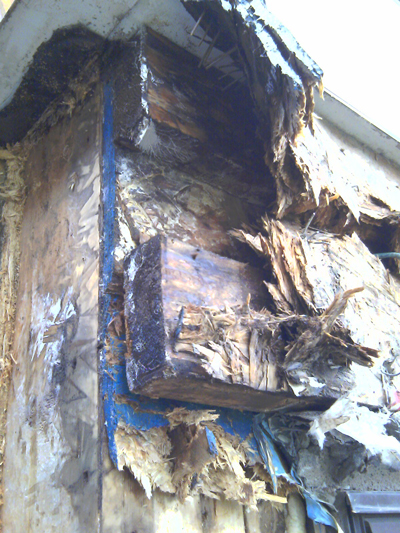MOLD Information
BETTER SOONER THAN LATER
Molds are ubiquitous in nature, and mold spores are a common component of household and workplace dust. However, when spores are present in large quantities, they are a health hazard to humans, potentially causing allergic reactions and respiratory problems. Some molds also produce mycotoxins that can pose serious health risks to humans and animals. The term "toxic mold" refers to molds that produce mycotoxins, such as Stachybotrys chartarum, not to all molds. Exposure to high levels of mycotoxins can lead to neurological problems and in some cases death. Prolonged exposure, e.g. daily workplace exposure, can be particularly harmful.
Causes & growing conditions
Molds and fungi are found everywhere inside and outside, and can grow on almost any substance when moisture is present. Molds when they reproduce make spores, which can be carried by air currents. When these spores land on a moist surface that is suitable for life, they begin to grow. Mold is normally found indoors at levels that do not affect most healthy individuals.
Because common building materials are capable of sustaining mold growth, and mold spores are ubiquitous, mold growth in an indoor environment is typically related to water or moisture indoors. Mold growth may also be caused by incomplete drying of flooring materials such as concrete. Flooding, leaky roofs, building maintenance problems, or indoor plumbing problems can lead to mold growth inside homes, schools, or office buildings.
For significant mold growth to occur, there must be a source of water (which could be invisible humidity), a source of food, and a substrate capable of sustaining growth. Common building materials, such as plywood, drywall, furring strips, carpets, and carpet padding are food for molds. In carpet, invisible dust and cellulose are the food sources (see also dust mites). After a single incident of water damage occurs in a building, molds grow inside walls and then become dormant until a subsequent incident of high humidity; this illustrates how mold can appear to be a sudden problem, long after a previous flood or water incident that did not produce such a problem. The right conditions reactivate mold. Studies also show that mycotoxin levels are perceptibly higher in buildings that have once had a water incident, accorinding to CMHC.


Both our indoor and outdoor environment have mold spores present. There is no such thing as a mold free environment in the Earth's biosphere.
Spores need three things to grow into mold:
- Nutrients: Food for spores in an indoor environment is organic matter, often cellulose.
- Moisture: Moisture is required to begin the decaying process caused by the mold.
- Time: Mold growth begins between 24 hours and 10 days from the provision of the growing conditions. There is no known way to date mold.
Mold colonies can grow inside building structures. The main problem with the presence of mold in buildings is the inhalation of mycotoxins. Molds may produce an identifiable smell. Growth is fostered by moisture. After a flood or major leak, mycotoxin levels are higher in the building even after it has dried out.
Food sources for molds in buildings include cellulose-based materials, such as wood, cardboard, and the paper facing on both sides of drywall, and all other kinds of organic matter, such as soap, dust and fabrics. Carpet contains dust made of organic matter such as skin cells. If a house has mold, the moisture may be from the basement or crawl space, a leaking roof, or a leak in plumbing pipes behind the walls. Insufficient ventilation can further enable moisture build-up. The more people in a space, the more humidity builds up. This is from normal breathing and perspiring. Visible mold colonies may form where ventilation is poorest, and on perimeter walls, because they are coolest, thus closest to the dew point.
If there are mold problems in a house only during certain times of the year, then it is probably either too air-tight, or too drafty. Mold problems occur in airtight homes more frequently in the warmer months (when humidity reaches high levels inside the house, and moisture is trapped), and occur in drafty homes more frequently in the colder months (when warm air escapes from the living area into unconditioned space, and condenses). If a house is artificially humidified during the winter, this can create conditions favorable to mold. Moving air may prevent mold from growing since it has the same desiccating effect as lowering humidity. Keeping indoor air temperature higher than 74°F (23.3°C) also has an inhibiting effect on mold growth.
Because common building materials are capable of sustaining mold growth, and mold spores are ubiquitous, mold growth in an indoor environment is typically related to an indoor water or moisture problem. Leaky roofs, building maintenance problems, or indoor plumbing problems can lead to mold growth inside homes, schools, or office buildings. Another common cause of mold growth is flooding.
Removing one of the three requirements for mold reduces or eliminates the new growth of mold. These three requirements are 1) Moisture, 2) Food source for the mold spores (dust, dander, etc), and 3) Warmth (mold generally does not grow in cold environments).

